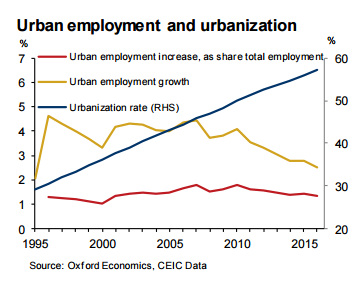China's economy continues its transition

Key trends in external trade
External trade developments have been blurred in recent years by large price changes. But by stripping out price changes we get a clear picture of the key trends in terms of the importance of external trade to China’s economy overall and the behavior of export and import volumes.
The share of external trade in GDP continued to trend down in 2016 after peaking in the mid-2000s (Chart 3). The decline was less pronounced for imports than for exports. That is why China’s current account surplus declined from a peak of 9.9 percent of GDP in 2007 to around 2 percent in 2016. The fall in exports is less pronounced if we look at the domestic value added content of in exports (excluding imported components) rather than at gross exports. In any case, the main reason for the diminishing share of external trade in the last 10 years is that prices of exports and imports lagged domestic prices by a large margin, which is to be expected in a rapidly growing country with strong productivity growth in its tradable sector.
The domestic value added content of (total) exports was around 17 percent of GDP in 2016, compared to total gross exports of 20 percent. In all, China’s economy has increasingly become mainly dependent on domestic demand, a fact not always appreciated. Total gross exports were 12 percent of GDP in the US last year, 16 percent in Japan and 19 percent in India.






















